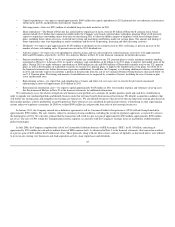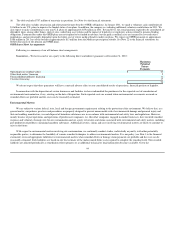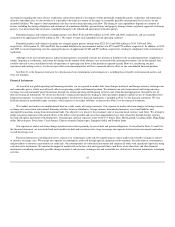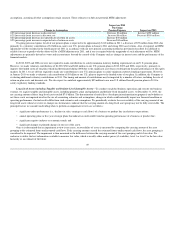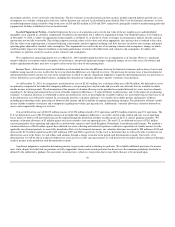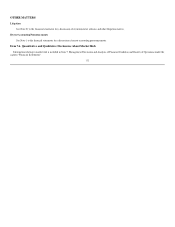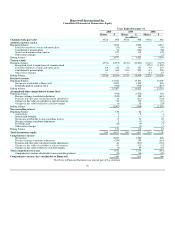Honeywell 2010 Annual Report Download - page 54
Download and view the complete annual report
Please find page 54 of the 2010 Honeywell annual report below. You can navigate through the pages in the report by either clicking on the pages listed below, or by using the keyword search tool below to find specific information within the annual report.
examination by the applicable taxing authority. In the normal course of business, the Company and its subsidiaries are examined by various Federal, State and
foreign tax authorities. We regularly assess the potential outcomes of these examinations and any future examinations for the current or prior years in
determining the adequacy of our provision for income taxes. We continually assess the likelihood and amount of potential adjustments and adjust the income
tax provision, the current tax liability and deferred taxes in the period in which the facts that give rise to a revision become known.
Sales Recognition on Long-Term Contracts—In 2010, we recognized approximately 14 percent of our total net sales using the percentage-of-
completion method for long-term contracts in our Automation and Control Solutions, Aerospace and Specialty Materials segments. These long-term contracts
are measured on the cost-to-cost basis for engineering-type contracts and the units-of-delivery basis for production-type contracts. Accounting for these
contracts involves management judgment in estimating total contract revenue and cost. Contract revenues are largely determined by negotiated contract prices
and quantities, modified by our assumptions regarding contract options, change orders, incentive and award provisions associated with technical performance
and price adjustment clauses (such as inflation or index-based clauses). Contract costs are incurred over a period of time, which can be several years, and the
estimation of these costs requires management judgment. Cost estimates are largely based on negotiated or estimated purchase contract terms, historical
performance trends and other economic projections. Significant factors that influence these estimates include inflationary trends, technical and schedule risk,
internal and subcontractor performance trends, business volume assumptions, asset utilization, and anticipated labor agreements. Revenue and cost estimates
are regularly monitored and revised based on changes in circumstances. Anticipated losses on long-term contracts are recognized when such losses become
evident. We maintain financial controls over the customer qualification, contract pricing and estimation processes to reduce the risk of contract losses.
51



